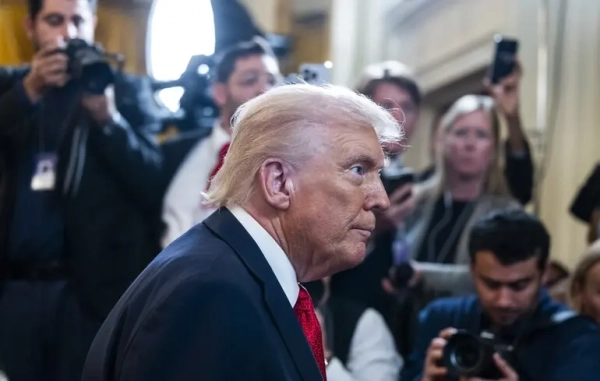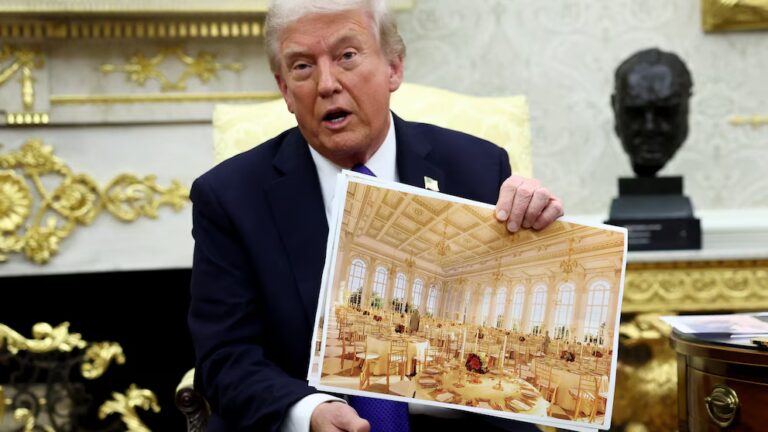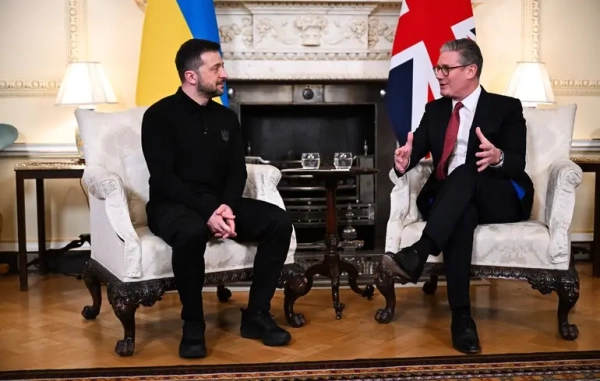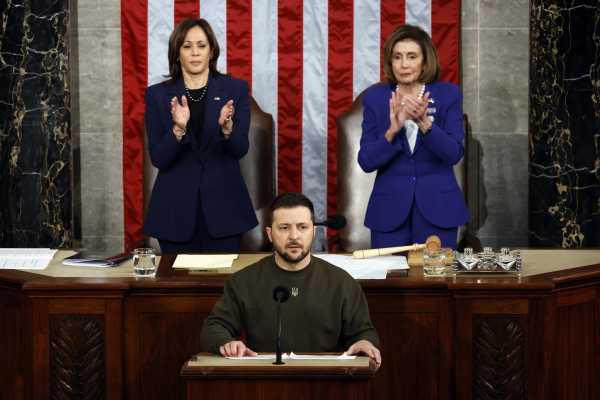
Jonathan Guyer covers foreign policy, national security, and global affairs for Vox. From 2019 to 2021, he worked at the American Prospect, where as managing editor he reported on Biden’s and Trump’s foreign policy teams.
Ukrainian President Volodymyr Zelenskyy, wearing fatigues, has made a wartime visit to the United States. Wednesday afternoon, he met with US President Joe Biden and his team at the White House, and in the evening, he addressed Congress at a time when lawmakers are debating tens of billions in further aid to his country.
“We will support Ukraine pursuing a just peace,” Biden said to Zelenskyy. “You are the man of the year,” and indeed a lot has changed in the past year since Russia started amassing troops on the Ukrainian border.
The United States is the first country since Russia’s invasion that the Ukrainian president has visited. Zelenskyy, in some senses, was overdue for a visit, especially given that Biden and his team have mobilized unprecedented military and financial assistance for Ukraine.
In his evening address to Congress, Zelenskyy expressed his gratitude for America’s staunch support and received bipartisan applause. “I thank every American family which cherishes the warmth of its home,” he said. “I thank President Biden and both parties in the Senate and the House for your invaluable assistance.”
By speaking in English, the Ukrainian president was savvy in ensuring his message would reach Americans directly, and occasionally offered a little bit of punch. (“Ukraine didn’t fall. Ukraine is alive and kicking,” he said.) There was even a gift exchange: Zelenskyy brought a Ukrainian flag that soldiers on the front lines in the Donbas had given him the day prior, and House Speaker Nancy Pelosi presented him with the US flag that had flown above the Capitol today.

Above all, Zelenskyy made a case to lawmakers that Ukraine’s struggle is part of a global fight for freedom and democracy. He also emphasized that the threat of Putin’s violence transcended Ukraine — and that Iran’s delivery of drones to Russia poses a larger challenge to America and its allies.
“Your money is not charity. It’s an investment in the global security and democracy,” Zelenskyy said.
Congress is on the verge of approving another $45 billion in aid to Ukraine and NATO allies, in addition to more than $65 billion in humanitarian and military aid that has already been sent since the conflict began. In conjunction with Zelenskyy’s visit, Biden also announced a $1.85 billion military package featuring a Patriot missile battery to bolster Ukraine’s defenses against Russian attacks. “Thanks from our ordinary people to your ordinary people,” Zelenskyy said earlier at the White House.
Since Russia attacked Ukraine nearly a year ago, Biden has also rejuvenated NATO and worked to ensure the ongoing support of European partners for Ukraine. Internationally, the Biden administration used the United States’ diplomatic prowess and heft as a convener to Ukraine’s benefit. The US has been extraordinarily successful on this front, bringing to bear intensive economic sanctions on Russia; transnational efforts to stem the knock-on effects of the war, notably on energy and food security; and United Nations votes that have at times embarrassed Russia.
On Wednesday, Secretary of State Tony Blinken posted a meme on social media that said, “The entire world stands with Ukraine.” That’s not entirely true. China and India are among the rising powers that have not taken a side, and the fact that so many countries have not joined the sanctions on Russia is reminiscent of the non-aligned movement during the Cold War.
All that means that while Ukraine has some powerful allies in its war against Russia, the country, as Zelenskyy has said at virtual events across the globe this year, needs all the support it can get. Hence the trip to Washington, DC.
Why Ukraine’s president is visiting the United States
Timing-wise, this is as good a moment as ever to visit given the current relative standstill in the war. After Ukraine’s stunning counteroffensive this fall, the conflict continues, with Russia launching attacks on civilian infrastructure in Ukraine. But the war has become on some levels more stabilized, and Zelenskyy has apparently made the determination that these assaults do not require presidential attention in-country.
The barrage of ongoing Russian attacks suggest that more monetary and diplomatic support will be needed. The war isn’t exactly at a stalemate, but it increasingly appears that a protracted fight is likely. Ukraine’s infrastructure and industries have suffered, and the country needs at least $3 billion a month just to keep its economy going. And that’s why the enduring role of Washington is so significant.
Overall, Zelenskyy’s message is that Ukraine is grateful for the United States’ support — and it’s going to need much more of it.
That commitment goes beyond specific weapons systems. This visit is about “preparing the American public and Congress for the potential that this is going to go on for a while and Ukraine will need to be an aid priority over the long term,” says Samuel Charap, a political scientist at the RAND Corporation.
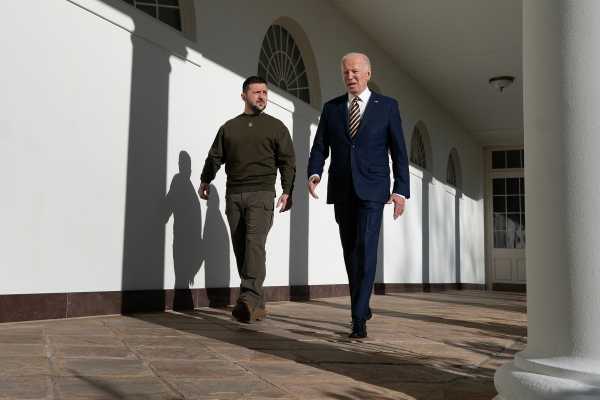
This has been an intensive day of public messaging, but what may be more important is the tenor of the closed-door conversations between Biden and Zelenskyy. We don’t have an in-depth sense of their rapport, and the Biden administration has been particularly leak-proof, which gives us even less insight than usual into the inner workings of such a high-level relationship. There have been some tensions behind the scenes. In June, Biden lost his temper in a phone call as Zelenskyy asked for more and more aid, according to an NBC report.
This isn’t Zelenskyy’s first visit to the Biden White House, and he’s been closely coordinating with the US throughout the conflict. Biden national security adviser Jake Sullivan visited Kyiv last month. Zelenskyy spoke virtually to Congress in March, and the Ukrainian first lady Olena Zelenska addressed the chambers in July. Both stand in contrast to the 2014 speech of then-Ukrainian President Petro Poroshenko, who called on the US to provide his country with weapons at the time when the Obama administration was limiting its assistance to non-lethal items. “One cannot win the war with blankets. One cannot keep the peace with blankets,” Poroshenko said.
Zelenskyy needs to ensure that the Biden administration and Congress will shepherd the coalition the US had put together through 2023 and after. He’ll have had a successful visit if Americans — particularly Republicans in Congress — grasp the immediate urgency of providing Ukraine with advanced weapons and the deeper sense of the long-haul perseverance of Ukraine in the face of Russian intransigence.
“The most likely endgame entails a new frozen conflict,” says Charles Kupchan, a scholar at the Council on Foreign Relations. “At least for now, Putin seems to be doubling down and not backing down.”
Why Zelenskyy came now
As much as Ukraine needs continued help, Zelenskyy’s visit comes at a time when the US’s future support is somewhat in doubt.
Besides reports of the June phone call between Zelenskyy and Biden, there has been little indication that the executive branch had any plans to reduce its commitment to its Eastern European ally. Congress is a different story, however — and that branch is ultimately the one that decides how much money Ukraine will get.
Republicans, some of whom are less open to Ukraine aid, are poised to retake the House next year. While a senior administration official said the White House remained confident that support for additional military and humanitarian assistance would continue to be bipartisan, a segment of the House Republican caucus has already vocalized their opposition.
Conservative lawmakers including Reps. Chip Roy (R-TX) and Marjorie Taylor Greene (R-GA) are among those who’ve questioned the need for more aid, while other top Republicans, including Texas Rep. Michael McCaul, the highest-ranking GOP member of the House Foreign Affairs Committee, have backed the decision to send more support. This split within the conference could affect future assistance for Ukraine given how narrow the Republican majority will be in the new term.
Previously, 57 House Republicans, or about a quarter of the conference, voted against sending $40 billion in aid this past May, citing the need to reduce spending amid high inflation. Likely House Speaker Kevin McCarthy has also expressed reservations about writing Ukraine a “blank check” in the future, though he later explained that he meant there should be more oversight and accountability of funds.
The White House argues the Zelenskyy visit is only intended to emphasize ongoing US solidarity with Ukraine as the conflict persists into its second year, according to the administration official. “This isn’t about sending a message to a particular political party, this is about sending a message to Putin and sending a message to the world that America will be there for Ukraine as long as it takes,” the official told reporters, when asked if the remarks are aimed at Republicans reluctant to approve more aid. However, getting the GOP on board with any future funding requests will be critical for maintaining military aid.
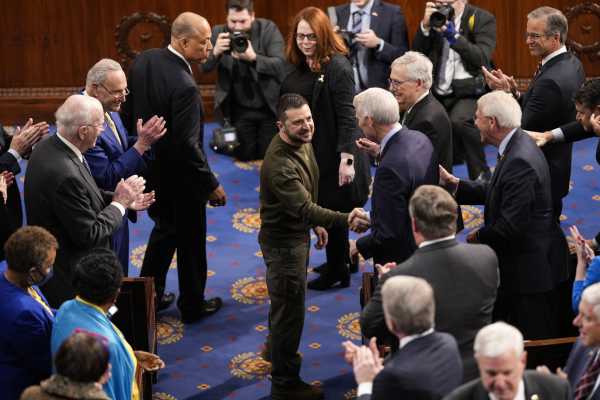
Next year, the GOP-led House and Democrat-led Senate will probably have to compromise in order to advance more Ukraine aid; to what degree they’ll be able to do so is somewhat uncertain. Many Republicans, including key leaders like Senate Minority Leader Mitch McConnell, have expressed strong backing for Ukraine. But the opposition such bills might face in the House could jeopardize their passage.
For their part, Democrats this week emphasized that the stakes are high should Congress end, or even limit, its support for Ukraine. “America and our allies have proudly answered your call: imposing devastating sanctions on Putin and ensuring Ukraine has the resources it needs to win this war,” House Speaker Nancy Pelosi wrote in a letter formally inviting Zelenskyy for the address. “The fight for Ukraine is the fight for democracy itself.”
Update, December 21, 8:30 pm ET: This story was originally published in the afternoon of December 21 and has been updated with details of Zelenskyy’s congressional address.
Sourse: vox.com
